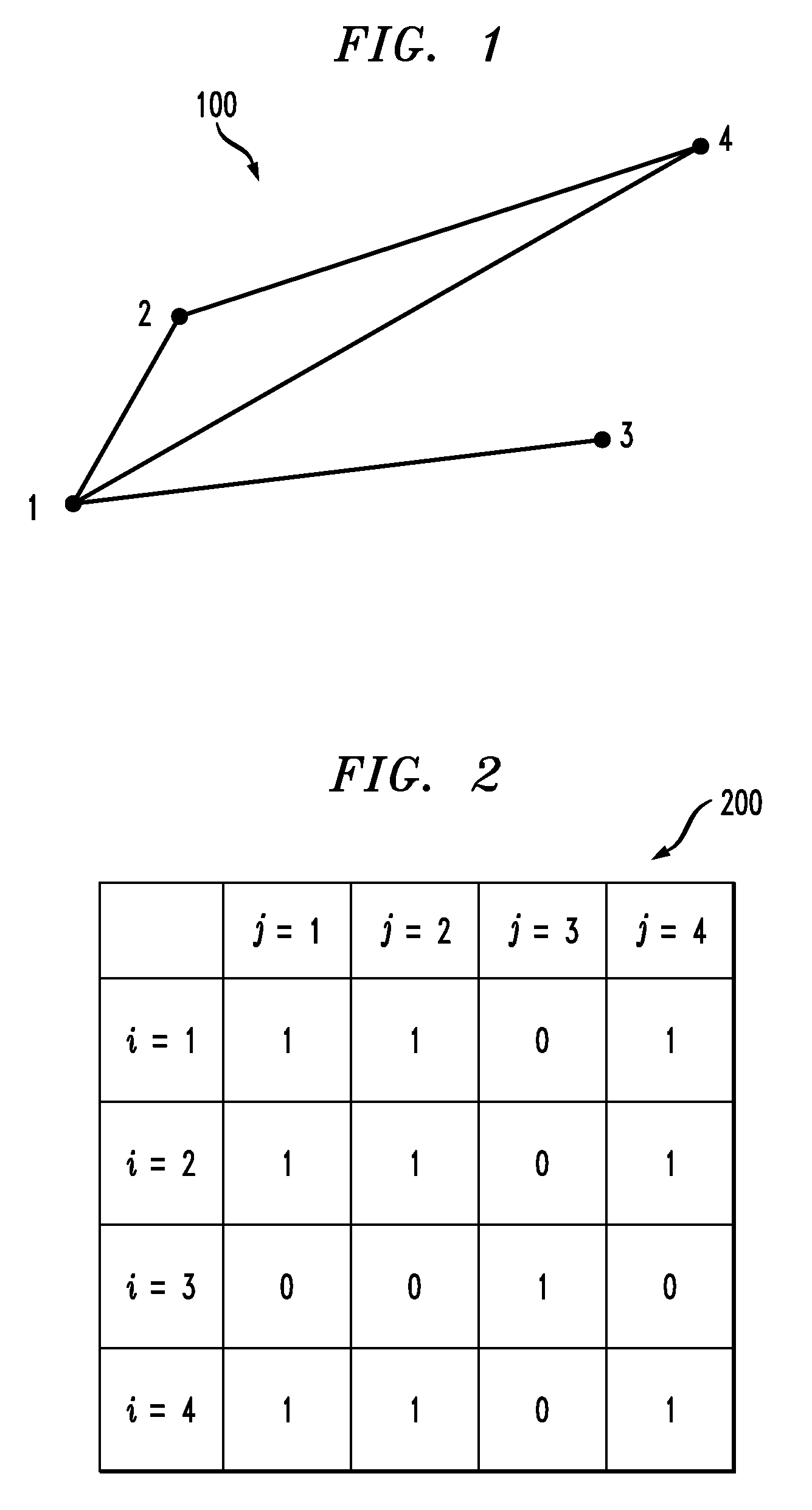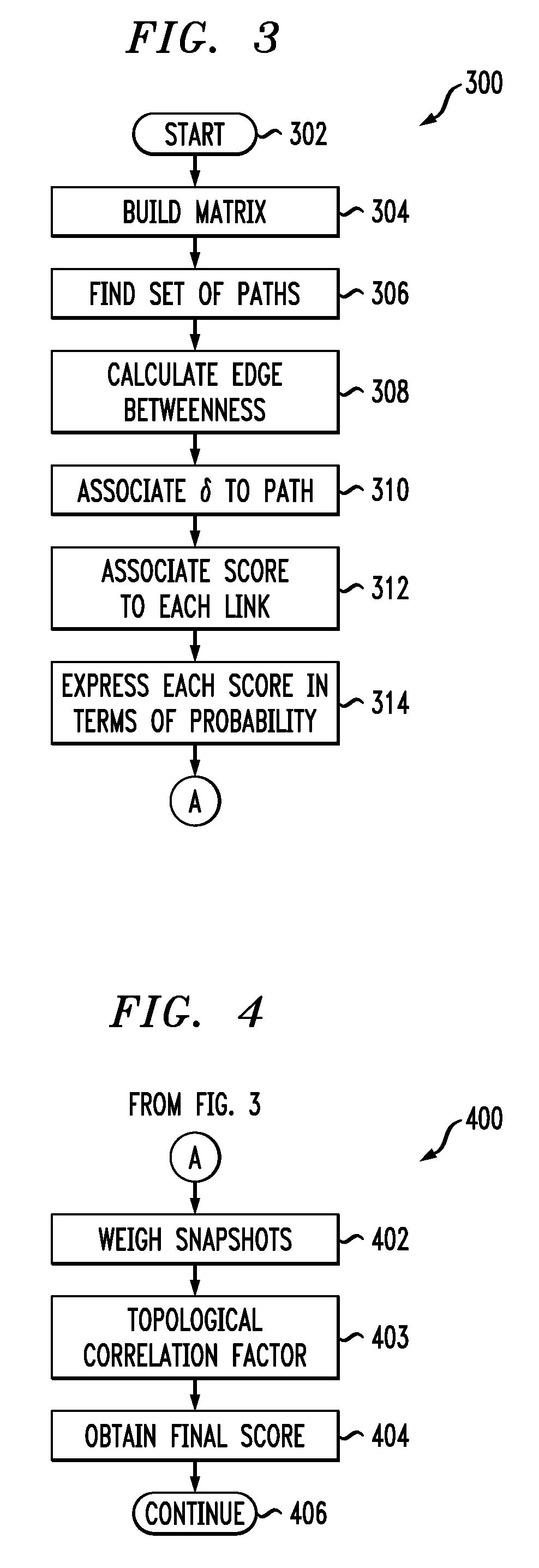Method to predict edges in a non-cumulative graph
- Summary
- Abstract
- Description
- Claims
- Application Information
AI Technical Summary
Benefits of technology
Problems solved by technology
Method used
Image
Examples
Embodiment Construction
[0013]One or more embodiments of the invention provide a method to predict edges in a future instance of a graph, given a sequence of graphs in the past. The prediction returns, for each edge, a probability of existing in the next instance. The probability also indicates the importance of an edge to the integrity of the topology of the graph (this measure can be used on both observed past occurrences as well as the predicted graph).
[0014]One or more embodiments of the invention provide a method to predict edges in a sequence of non-cumulative snapshots of a graph through time. The exemplary inventive model does not assume than if an edge appears in a snapshot Ti it will always remain in the future snapshot Tj with j>i. In other words, once a snapshot Si is taken, knowledge associated with the graph at the instance “i” is erased and a new graph is built. An advantage with such graphs is that they are smaller in size (in that there will be fewer edges than if we assumed that all edges...
PUM
 Login to View More
Login to View More Abstract
Description
Claims
Application Information
 Login to View More
Login to View More - R&D
- Intellectual Property
- Life Sciences
- Materials
- Tech Scout
- Unparalleled Data Quality
- Higher Quality Content
- 60% Fewer Hallucinations
Browse by: Latest US Patents, China's latest patents, Technical Efficacy Thesaurus, Application Domain, Technology Topic, Popular Technical Reports.
© 2025 PatSnap. All rights reserved.Legal|Privacy policy|Modern Slavery Act Transparency Statement|Sitemap|About US| Contact US: help@patsnap.com



